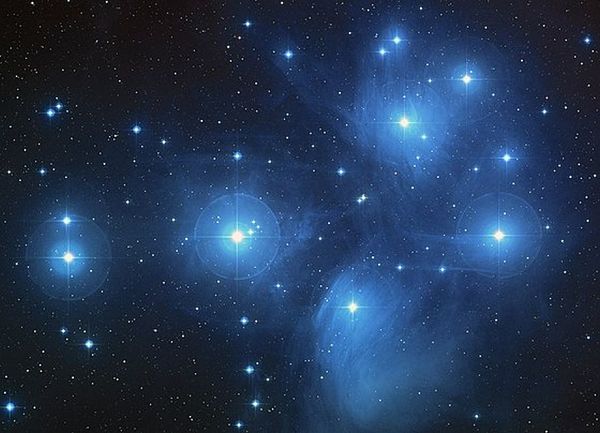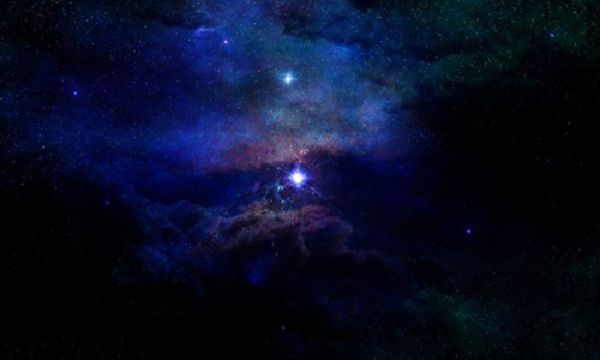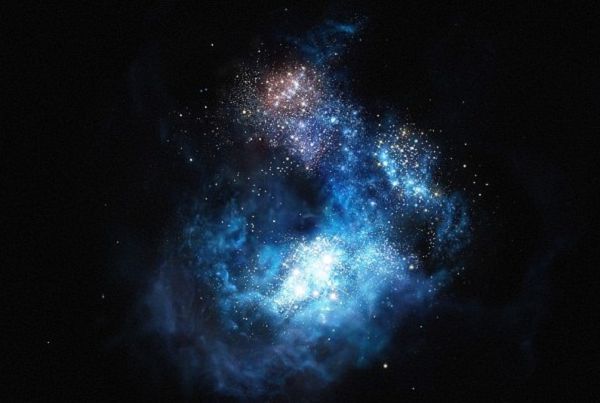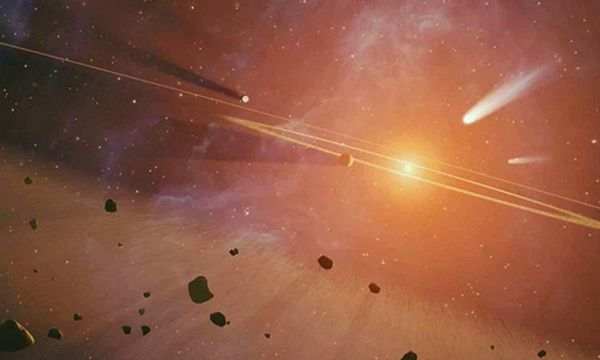NASA Captures a Ghostly “Time-Traveling” Specter from 13 Billion Years Ago
Two space telescopes from NASA have captured the “ghost” of a record-breaking star, “time-traveling” to Earth from 13 billion years ago.
The two space telescopes, James Webb and Hubble, have detected a massive blue star, born nearly 13 billion years ago, appearing as a “ghostly” figure.
It consists of only a few ancient photons but shines brightly, having undergone a treacherous journey through a warped spacetime due to expansion and the gravitational wells of younger stars and galaxies before reaching Earth.
The star is named WHL0137-LS or more commonly referred to as “Earende in the Tolkienesque region.” Earende is an archaic term for a shining object like the Morning Star, while Tolkienesque denotes a style reminiscent of the works of J. R. R. Tolkien, the creator of “The Lord of the Rings” and the Hobbit.
Analysis of images from James Webb reveals Earende appearing as a hazy, spiraling ring. It is not the star itself but rather its ghost, the light that has taken 13 billion years to reach Earth.
The “ghost” of WHL0137-LS has overcome the challenging journey of an expanding universe since its primordial stages, surpassing gravitational swirls from galaxies and other stars along the way to reach the “cosmic eyes” of Hubble and James Webb.
This star in the Pisces constellation is believed to have formed around 900 million years after the Big Bang, not being among the first generation of stars in the universe but still ancient, emerging during a time when heavy elements were relatively scarce.
The hypothesis of the Big Bang explosion remains widely accepted as an explanation for the origin of the universe. Rewinding time 13.7 billion years, when the entire universe existed as a peculiar point and began with the Big Bang.
The Big Bang theory is embraced by many astronomers as the cause of the universe’s formation. However, if that theory holds true, what existed before the explosion, and what caused the explosion?
The Big Bang theory suggests that the universe had a starting point for its formation. It was the Big Bang explosion—the first explosion that simultaneously gave birth to space, energy, and matter, leading to the creation of the universe as we know it today.
According to this scenario, the primordial universe was just an extremely dense and hot cosmic ocean, and then the Big Bang explosion occurred, initiating all subsequent events.
The Big Bang hypothesis is still considered the most widely accepted explanation for the origin of the universe.
According to this hypothesis, a colossal explosion 13.8 billion years ago gave birth to the entire current universe, causing space to continuously expand from a single point (referred to as the singularity) and the emergence of matter from elementary particles.
Hits: 0

















